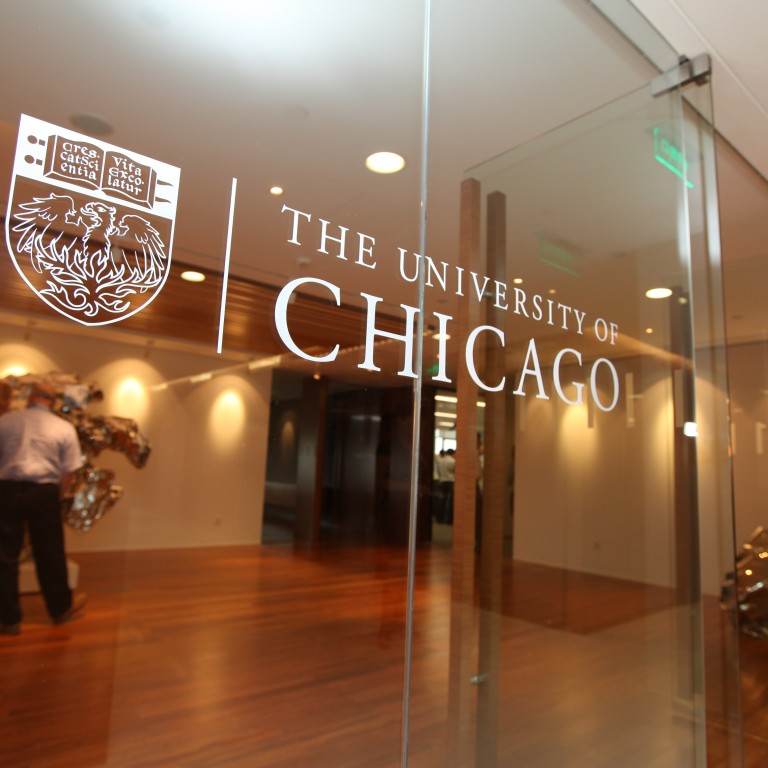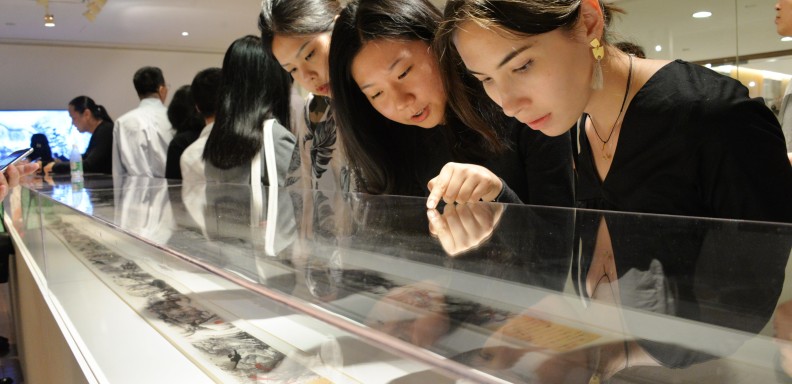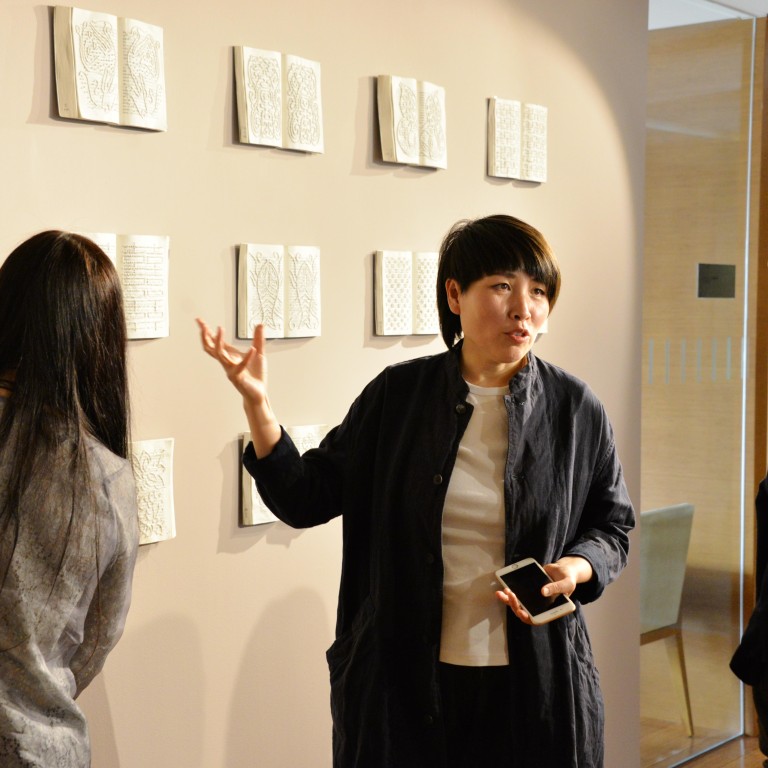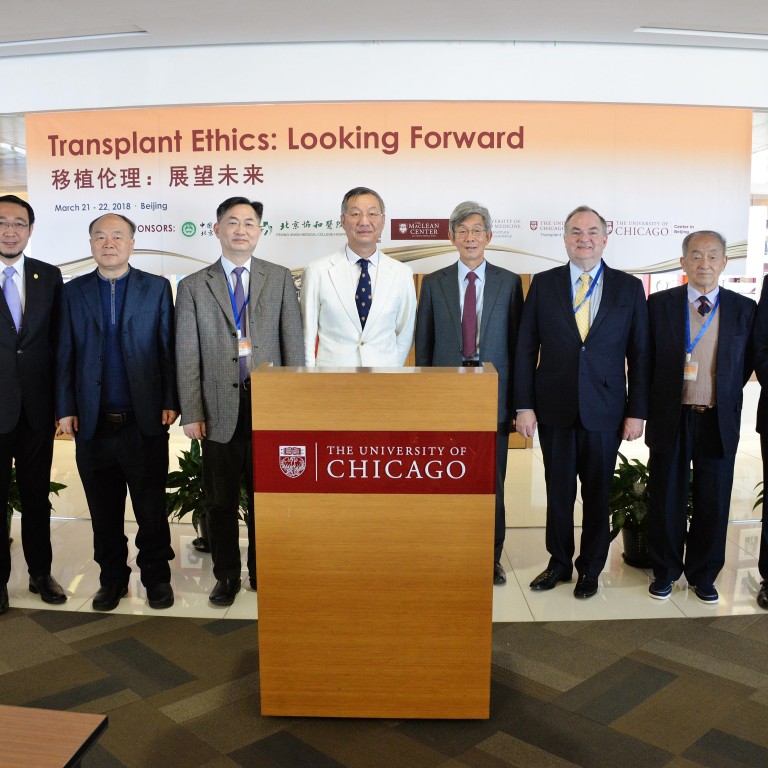The majority of students in the Social Sciences Spring Study Abroad program departed from the original topic for a paper in Professor Michael Geyer's Global Condition class. Instead of writing on Giovanni Arrighi's Adam Smith in Beijing, an assigned reading, they opted to discuss the global condition in China using as a starting point one of their excursion discoveries, especially the Military History Museum, the National Museum of China, the performance of the "Red Detachment of Women" or the architecture tour.
On May 20th, Chicago alumna Amy Lelyveld led students on a tour of Tiantan (The Altar of Heaven) and the Olympic Park's Watercube. Lelyveld, an architecture professor at Yale and Qinghua Universities, carefully explained the rituals the emperor was required to perform at Tiantan annually and pointed out the exact spot once considered the center of the world.
The excursion continued at Olympic Park, which sits directly north on the axis running through Tiantan and the Forbidden Palace. The students visited the Watercube, an icon of global power and self-presentation. Built to host the 2008 Summer Olympics water sports, the Watercube is now a combination swimming arena and water park. Lelyveld then led the students to visit architect LI Zhang at the offices of his firm Team Minus. Li is working on designs for a cultural center complex adjacent to Olympic Park which will also sit on the historic north/south axis of Beijing. He discussed the concerns he had with protecting the essence of China's architectural themes while collaborating with contemporary western firms.
A Faulkner quote applies here: "The past is never dead. It's not even past." The excursion deepened the sense of a vast disjuncture, in which the past is just one of many "presents" to be had in Beijing.
The third excursion took place on April 15th, beginning at the newly re-opened National Museum of China. Still quite empty, the students had plenty of time to view the Art of the Enlightenment Exhibition. The photo at left shows students sitting in front of the statue of Confucius outside the north entrance, but a few days later the stature was moved to an alcove inside the museum. Some students would return in late April and May to the National Museum to view the splendid and huge, permanent Ancient China exhibition as well as an insouciant Louis Vuitton exhibition. These experiences pointed out the extraordinary eclecticism in Chinese self-representation that emerged as the central tenet of these excursions.
In the afternoon of April 15th, the group visited the 798 Art Zone, which exhibits as much commerce as art now. The high point of this excursion was the Cultural Revolution Ballet "Red Detachment of Women," staged by the National Ballet of China and sponsored by American Airlines-- with drinks, buffet and speeches.
The second excursion on April 8 was a tour de force. It began in the Military History Museum, a subtly modernized, neo-classical building. Fortunately, the exhibition spaces have not yet been revised. From there, the caravan went on to the ultramodern Capitol Museum, a brilliant architectural space, but with rather limited and quite eclectic exhibits -- a bit porcelain, bit folk culture, a bit archeology -- for a global audience.
Onwards and upwards we moved to see wealth and power, visiting P1.cn, a lifestyle website run by a former University of Chicago student. A lively discussion ensued about the nature of the website and what it told us about the aspiring upper middle class in China. The evening ended with dinner and entertainment at the North Korean restaurant in Beijing.
On April 1, students visited sites contrasting archaic and postmodern Globalization-- tours of the National Center for Performing Arts and of the Clock Museum in the Forbidden City. The National Center is a magnificent postmodern building. The huge marble floors and soaring empty spaces are designed to impress. Students were shown the two smaller theaters, quite intimate spaces despite their size. The proximity to Tiananmen Square and the monumental qualities of the building suggest a modern version of power architecture. The architecture is iconic, meant to brand the new China as a future-oriented nation.
The Clock Museum in the Forbidden City depicts a much earlier stage of globalization sometimes called archaic. Clocks appear less as time-keeping & disciplining instruments (and, hence, as instruments of modernization), but instead as luxury items and play things. In the context of theories of modernization and industrialization (Why did China fall behind?), some prominent authors feel this exemplifies the difference between Europe and China. But if this is the case, where do we put the import of lifestyle and iconic architecture from Europe and the export of industrial goods from China in the present? Have West and East changed positions?



